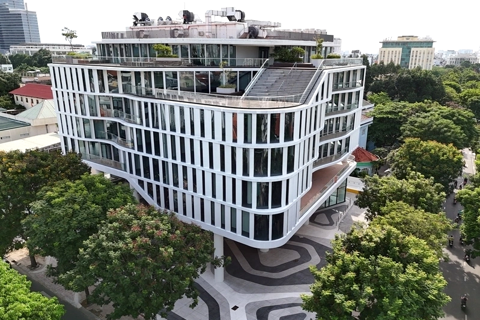Business
State to divest 18% stakes at Viglacera in 2018
May 27, 2018 / 09:34 AM
The Vietnam government plans to offload a 17.97% stake in ceramics and building material corporation Viglacera on the Hanoi Stock Exchange (HNX) by June, announced the firm on May 26.
In an announcement, the Hanoi-based firm said it is accelerating the completion of procedures for state capital divestment scheduled in the second quarter this year.
Under the plan, the Ministry of Construction, which is the state representative of Viglacera, will reduce its stake from 53.97% to 36% by June this year and will totally exit the ceramics maker next year.
The state's 80.5 million shares will be sold via competitive bids, and the auction price will be the average of the prices recorded in the last 30 trading sessions prior to the bidding date and not lower than VND26,100 (US$1.14) apiece. At the price, the state expects to earn at least VND2.1 trillion (US$92.4 million) from the sale.
Established in 1974 and equitised in 2014, Viglacera's charter capital has increased to nearly VND2.65 trillion (US$118.3 million) over the years. The Hanoi-based firm is Vietnam's largest producer of ceramics and tiles for construction, owning 10 factories, 22 subsidiaries and five affiliate companies.
In February 2014, investors bought nearly 19.5 million shares during the company's initial public offering (IPO), accounting for some 25% of the stake on offer. Foreign buyers snapped up half of the shares.
Viglacera earned VND200 billion (US$9.3 million) from the IPO, after which, the well-known ceramic producer targeted to publicly list within one year. Viglacera is also a real estate investor in addition to its construction-related business. In 2015, it secured a nod from the Ministry of Construction to establish a real estate company, named Visaho, with a charter capital of VND35 billion (US$1.6 million). The company is known for affordable housing projects for low-income people in industrial parks.
In the first quarter, Viglacera's revenue stood at VND1.83 trillion (US$80.5 million), down 10% year-on-year while after-tax profit at VND103 billion (US$4.53 million), down 3% year-on-year.
In 2018, Viglacera set revenue target of VND9.1 trillion (US$399 million) and pre-tax profit of VND950 billion (US$41.65 million).

Illustration photo.
|
The state's 80.5 million shares will be sold via competitive bids, and the auction price will be the average of the prices recorded in the last 30 trading sessions prior to the bidding date and not lower than VND26,100 (US$1.14) apiece. At the price, the state expects to earn at least VND2.1 trillion (US$92.4 million) from the sale.
Established in 1974 and equitised in 2014, Viglacera's charter capital has increased to nearly VND2.65 trillion (US$118.3 million) over the years. The Hanoi-based firm is Vietnam's largest producer of ceramics and tiles for construction, owning 10 factories, 22 subsidiaries and five affiliate companies.
In February 2014, investors bought nearly 19.5 million shares during the company's initial public offering (IPO), accounting for some 25% of the stake on offer. Foreign buyers snapped up half of the shares.
Viglacera earned VND200 billion (US$9.3 million) from the IPO, after which, the well-known ceramic producer targeted to publicly list within one year. Viglacera is also a real estate investor in addition to its construction-related business. In 2015, it secured a nod from the Ministry of Construction to establish a real estate company, named Visaho, with a charter capital of VND35 billion (US$1.6 million). The company is known for affordable housing projects for low-income people in industrial parks.
In the first quarter, Viglacera's revenue stood at VND1.83 trillion (US$80.5 million), down 10% year-on-year while after-tax profit at VND103 billion (US$4.53 million), down 3% year-on-year.
In 2018, Viglacera set revenue target of VND9.1 trillion (US$399 million) and pre-tax profit of VND950 billion (US$41.65 million).








